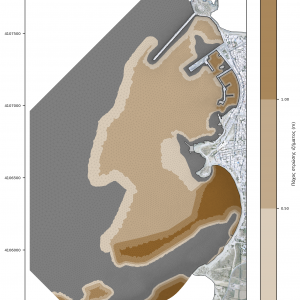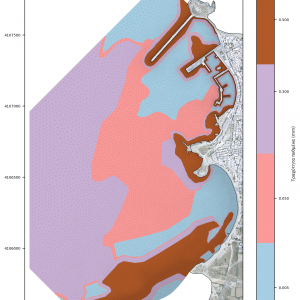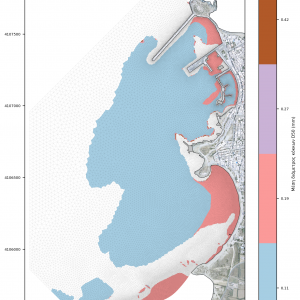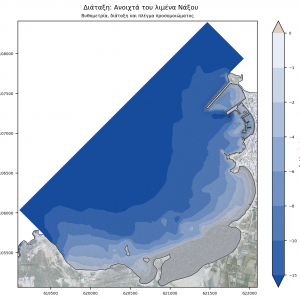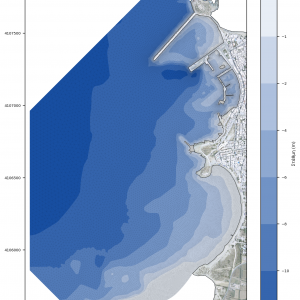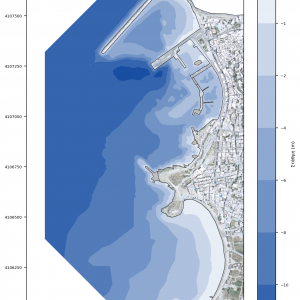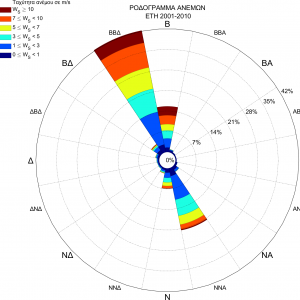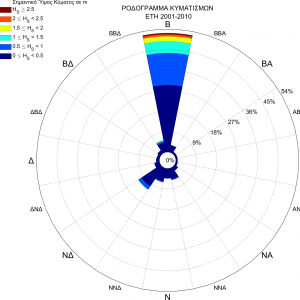Sediment transport study for the Naxos Port Development Framework
The sediment transport study is complementary to the project entitled "Naxos Port Development Framework", commissioned to CNWAY in April 2016.
Project scope
The objectives of this coastal engineering study were to assess the efficiency of the existing and proposed works layout with regards to preventing:
- Potential siltation of the port basin.
- Potential morphological changes to the adjacent coastlines.
The use of a mathematical model enables numerical simulation of coastal processes and sediment transport thereby predicting morphological evolution. Therefore, its role is central to a coastal engineering study.
Numerical modeling
Offshore sediment transport was performed with the TMS (Telemac-Mascaret System) computing suite based on the coupling of individual models of wave propagation (TOMAWAC and ARTEMIS), wave-induced currents (TELEMAC2D) and sediment transport (SISYPHE).
Model parametrization requires the input of sediment grading, spatial distribution and availability, as well as the spatial distribution of the corresponding friction coefficients based on the seabed texture. The spatial distribution map was created by combination of remote-sensing techniques and an appropriate on-site survey and sampling program. Specifically, the following supportive activities were carried out:
- shoreline investigation
- seabed sediment sampling at varying depths
- bathymetric and topographic survey
- photographic documentation / Aerial mapping
- marine vegetation mapping
- wind-wave climate estimation
Meticulous parametrization ensures more accurate modeling of physical processes, enhancing the reliability of the analysis results.
Numerical model characteristics
The model consists of 2 sub-models, 'offshore' and 'nearshore'. The 'offshore' extends from the offshore wave position (WAM wave model node) to the shore, and its role is to prescribe wave and current boundary conditions for the 'nearshore' model. The 'nearshore' model is a subset of 'offshore' and this nesting aims to reduce computational effort.
- Offshore model: It extends 3,4 km along the NW-axis and 2,3 km laterally. It covers an area of approximately 5,5 km2 and consists of 215,000 elements and 110,000 nodes.
- Nearshore model: It extends 2,5 km along the NW-axis and 1,7 km laterally. It occupies an area of approximately 1,6 km2 and consists of about 127,000 elements and 66,000 nodes.
- Wave disturbance model: It extends 2,0 km along the N-axis and 900 meters laterally. It covers an area of about 1,2 km2 and consists of about 626,000 elements and 315,000 nodes.
Wave climate
The wind and wave climate of the project was derived from the Skiron and WAM model respectively for the period 2001-2010.
Initially, wave directions were divided into 45 ° sectors and wave height values were divided into 1.0 meter bins. Very low waves were excluded while very high were aggregated due to the very low frequency of occurrence.
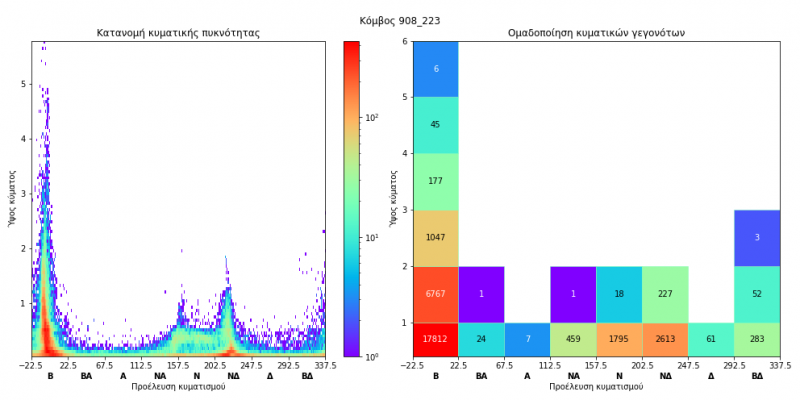
The wave cases were examined sequentially so that changes in bottom morphology are taken into account in the next case. The procedure was repeated 5 times, to simulate bottom change over 5 years.
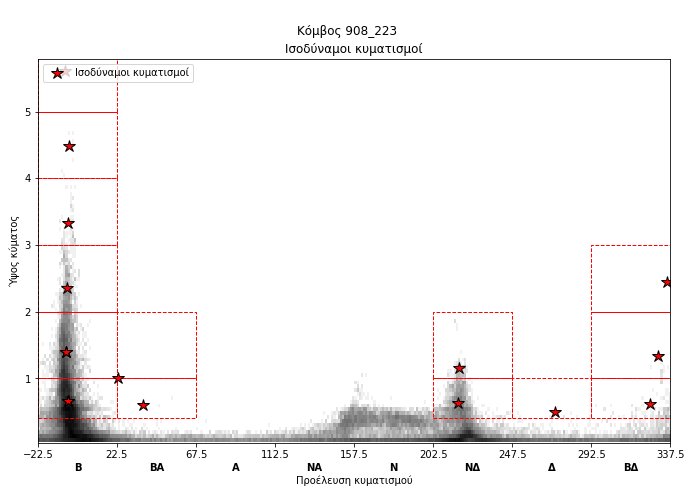
The wave cases were examined sequentially so that changes in bottom morphology are taken into account in the next case. The procedure was repeated 5 times, to simulate bottom change over 5 years.
Conclusion
According to the findings of the preliminary coastal assessment and the results of the numerical simulation, the area surrounding the port is morphologically inactive and as a result siltation is not considered an issue.
Saint George beach is located south of the works. According to the coastline evolution investigation, the coastal stretch in the north of Saint George beach has been accreting over the years. Model results have shown that alternative layouts 2 and 3 lead to increased accretion in the area whereas layout 1 does not. Thus, layout 1 is the optimum with respect to coastline impact.
However, based on the results of the multi-criteria analysis which was undertaken in the context of the study entitled "Naxos Port Development Impact", the preferred alternative is layout 3.

